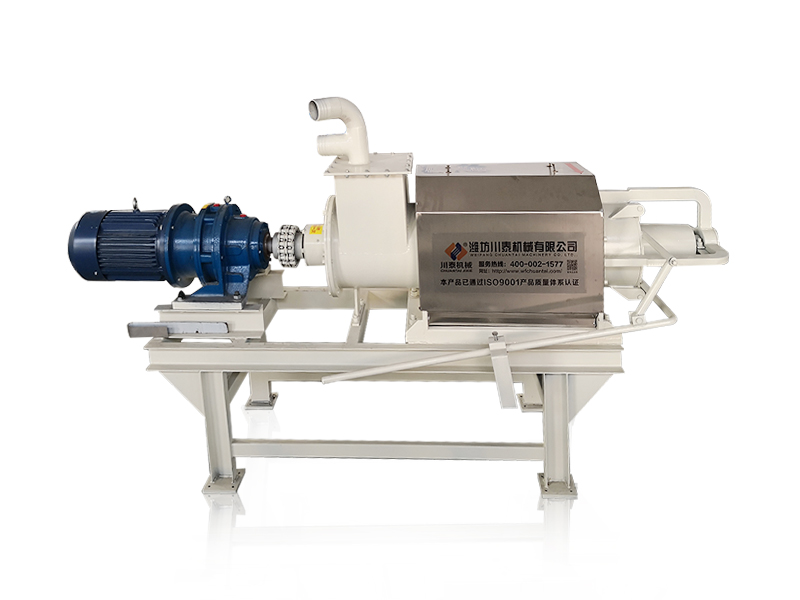
Cow dung solid-liquid separator
In modern dairy farming, the management of manure is a critical aspect of maintaining environmental sustainability and herd health. Cattle manure is a valuable resource, rich in nutrients, but its improper handling can lead to environmental pollution and nutrient imbalances. The application of cattle manure solid-liquid separation technology has emerged as an effective solution to address these challenges. This article explores the various applications and benefits of using a cattle manure solid-liquid separation system in dairy farms.
Benefits of Solid-Liquid Separation:
Cattle manure is a mixture of solid and liquid components. Traditional manure management systems often involve direct spreading of raw manure onto fields, which can result in uneven nutrient distribution and runoff into water bodies. The introduction of solid-liquid separation technology allows dairy farmers to extract valuable solid and liquid fractions from manure, each with distinct benefits.
Nutrient Management:
The solid fraction obtained after separation contains a higher concentration of nutrients such as nitrogen, phosphorus, and organic matter. This nutrient-rich solid can be strategically utilized as organic fertilizer for crop cultivation, leading to better nutrient utilization, reduced fertilizer costs, and improved soil health.
Reduced Environmental Impact:
By separating the liquid portion of manure, the volume of effluent that needs to be managed and treated is significantly reduced. This aids in minimizing the risk of nutrient leaching into groundwater and reduces the potential for water pollution. Moreover, the solid fraction can be stored and applied to fields at appropriate times, minimizing nutrient loss and environmental impact.
Improved Anaerobic Digestion:
Anaerobic digestion is a common method of treating manure to produce biogas and generate energy. Separating the solid fraction prior to digestion can enhance the efficiency of the process, as the solid portion is easier to digest and results in higher biogas yields.
Cleaner Barn Environment:
Solid-liquid separation reduces the moisture content of the barn bedding material, creating a drier and more comfortable environment for the cattle. This can lead to improved udder health, reduced risk of infections, and increased milk production.
Regulatory Compliance:
Many regions have stringent regulations regarding manure management and nutrient application. Solid-liquid separation enables farmers to adhere to these regulations more effectively by facilitating controlled nutrient application and minimizing the risk of runoff.
Implementation and Considerations:
Implementing a cattle manure solid-liquid separation system involves selecting the appropriate equipment, such as mechanical separators or sedimentation tanks, based on herd size and manure production. Proper maintenance and regular cleaning of the equipment are essential to ensure consistent performance.
Conclusion:
The application of cattle manure solid-liquid separation technology offers dairy farmers a range of benefits, from improved nutrient management and reduced environmental impact to enhanced biogas production and herd health. By harnessing the value of both solid and liquid fractions, dairy farms can contribute to sustainable agriculture practices while complying with regulatory requirements. As the dairy industry continues to evolve, embracing innovative solutions like solid-liquid separation will be crucial for its long-term viability and environmental responsibility.




If your company wants to establish a business relationship with us, please briefly describe the cooperation intention and send an email to:chuantaiscrewpress@gmail.com

